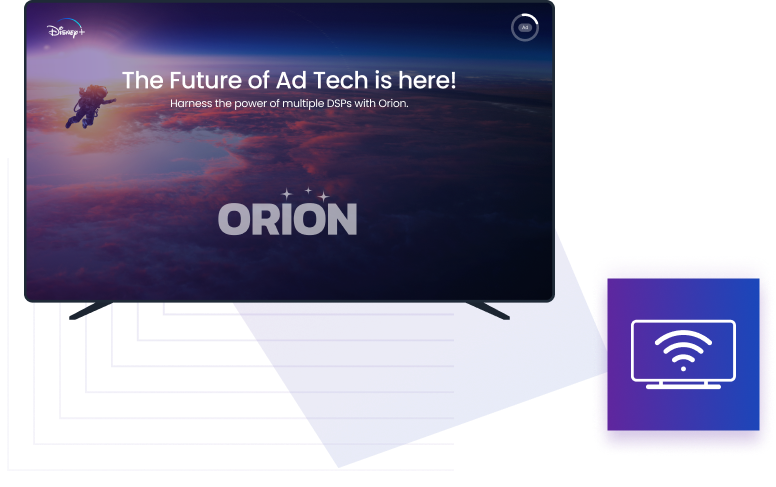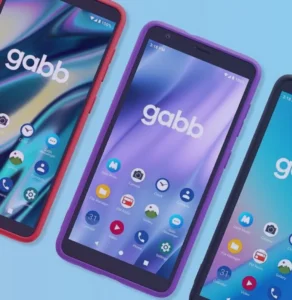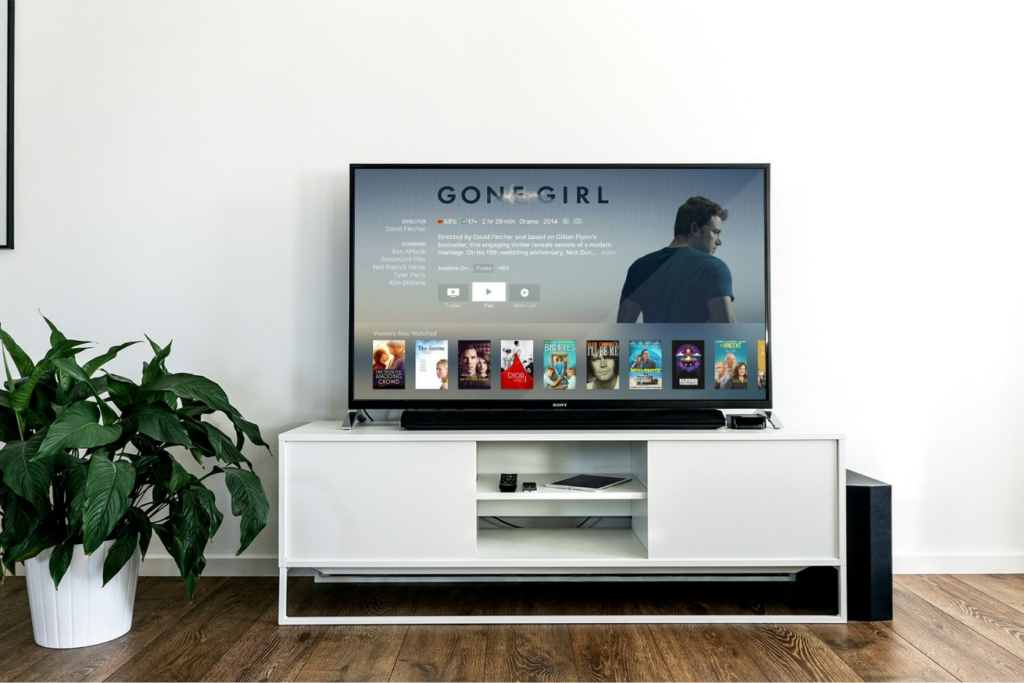Welcome to our CHANNELS series, where we cover the major marketing channels available to you today, and if they are right for your business. Today, we’re covering Connected TV (CTV) and its definitions, placements, and how to measure a campaign.
The CTV takeover
CTV is one of the fastest growing areas of advertising spend, as more and more households cut cable, switching to the ease of access and (in some cases) reduced monthly costs of streaming TV.
- If you’re reading this in the year 2024, there’s a good chance you own a connected TV device. According to data from Statista, in 2023, 88% of US-American households owned at least one CTV.
- 110 million Gen Z and Millennials are CTV users.
- In 2023, U.S. adults were predicted to spend almost 2 hours watching a connected TV device per day.
- Importantly, almost 60% of CTV users in the U.S. thought that CTV ads were more relevant than linear TV ads.
For advertisers, there are also improved benefits over traditional TV. In The Trade Desk’s 2024 report on CTV, advertisers reported four main benefits of this channel: “easier campaign optimization and video campaign flexibility (37%), scalability (34%), improved return on investment (ROI) and return on ad spend (ROAS) (32%), and the ability to control ad frequency (32%).”
Connected to what? (Linear v. CTV)
A Connected TV, also known as a Smart TV, is a large-screen device that has internet connectivity and the capacity to play video, which includes internet-connected TVs, a game console like PlayStation or XBox that plays over a TV, or a streaming device like Roku or Amazon Fire Stick.
CTV is different from traditional (or linear, as it’s known in advertising) TV, which uses high-powered radio frequency signals to receive video either through the air–remember bunny ears?–or fiber optic cables, hence the name.A Connected TV receives its signal from your WiFi or ethernet cable, and is part of the open internet that allows marketers to access contextual data about a user, which is not possible through traditional, linear TV.
CTV v. OTT
When looking for information on CTV, you may have run across the term OTT, which stands for “Over The Top.” The term first originated when streaming did, to differentiate streaming from cable. The term is a reference to content being delivered in addition to, or over the top of, traditional cable TV.So how are they different?
So how are they different? CTV only refers to the specific device of a large-screened TV device that shows internet-delivered content. OTT refers to the content delivery method of streaming–this can be in reference to different devices, like mobile or desktop, or different streaming services. OTT is used as an umbrella term, while CTV is a specific descriptor.
Where are CTV and OTT ads shown?
While not a comprehensive list, here are some examples of CTV and OTT ad placements:
In-App Ads
Some streaming apps like Hulu have ad-supported memberships, so these ads are served directly through the show itself, on any connected device.
Smart TVs
Smart TVs can connect to the internet, and thus, show ads as part of their interface or during shows.
Gaming Consoles
Ads on gaming devices are shown on game menus or interfaces through methods like banners, or in-game content.
Mobile Devices
Many people watch shows on their smartphones, so OTT ads can be served in-show. It’s important to consider the size differences when designing your creative.
How are CTV ads measured?
Great question—with the power of data, connected TV ads can be measured through many different lenses.
Programmatic advertising allows advertisers to gain more advanced insights on their users than traditional, linear TV.
Each DSP provides many analytics options. However, the main methods to measure a CTV campaign’s effectiveness are:
- Viewability, or how likely a user is to see an ad. Viewability scores higher if a person watched over 50% of the ad and increases with device size. A CTV ad scores high on viewability because it has a large screen, and the ad takes up the entire screen.
- Reach is the amount of unique viewers that have seen the ad.
- Frequency is how many times a household has seen your ad. A higher frequency can mean that the user is more familiar with your brand and more likely to convert, but if they see the ad too much, they can experience ad fatigue, where they become bored with and even hostile towards the ad.
Our programmatic ad platform ORION allows you to create multiple campaigns with multiple DSPs and measure the performance across each. Different DSPs allow you to measure:
Impressions
The number of times that an ad has been loaded and played and, thus, has presumably been viewed. Notably, it does not measure how many times the ad was clicked.
Revenue
How much total revenue the ad creates.
Acquisition
How many unique customers the ad brings in.
Cost Per View (CPV)
Cost Per View, sometimes known as Cost per Completed View, means that the advertiser only pays when the ad was either viewed in its entirety without skipping, or if the viewer interacted with the ad.
Cost per view = total cost / number of views.
Cost Per Thousand (CPM)
Cost Per Thousand View calculates the total spend per thousand impressions of the ad. Since impression only measures that the ad was loaded, and not engaged with, they are measured in the thousands.
Detail Page View
A term most commonly used when referring to e-commerce or content driven websites, and is used to describe the number of times that users click on a product’s details to see more information, reviews, or photos.
Video Completion Rate
Measures the amount of times that the video was watched in its entirety.
How do I measure the effectiveness of my CTV campaign?

While the above KPIs can provide specific goals, how do you measure the overall effectiveness of your campaign?
- Return On Ad Spend (ROAS) of the campaign is the amount spent on the campaign versus the revenue generated.
- Awareness: Run brand awareness surveys during or after the campaign.
- Cost Per Acquisition (CPA), which is calculated by dividing the total revenue generated by number of conversions.
- Conversions are how many people completed the intended action of your campaign: visiting your site, clicking your ad, or purchasing a product.
- Conversions are measured via attribution, which is a whole article unto itself. The gold standard for conversion measurement is multi-touch attribution, which takes into account the whole user’s journey by tracking which ads a user has seen, which touch-points they have encountered, and figuring out which parts of the pipeline contributed to making the final sale, at which percentages.
- So how does this practically work? Installing a pixel on your website can provide valuable data for measuring conversions, or creating a specific landing page for your campaign. For more information on conversions, reach out to our team—we’d love to discover if we can help you achieve better results.
How do I buy CTV ads?
You can buy CTV slots programmatically or non-programmatically.
To buy programmatically, you can utilize a DSP, on which you can set up your campaign and the platform purchases on your behalf. This machine intelligence gives you the ability to reach the perfect person, at the perfect price.
Our proprietary platform ORION gives you access to the top 6 market leading DSPs, including DV360, The Trade Desk, and Amazon Ads DSP. ORION allows you to run multiple campaigns with multiple DSPs, using each DSP to its full potential and giving you the best results.
Sign up for our newsletter using the sign up box on this page to have next week’s topic delivered straight to your inbox: CTV Inventory. We will go over the different ad slots available, where to find it, and how to buy. See you there!
Interested in using programmatic advertising to take your campaign to the next level? Reach out to our team to see if CTV is the right channel for your audience, and how ORION can help you get there.









